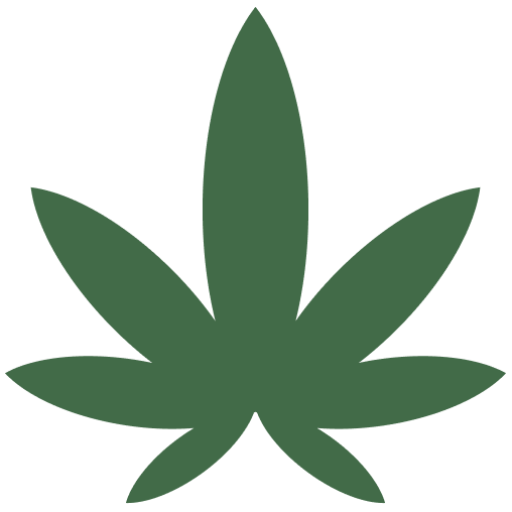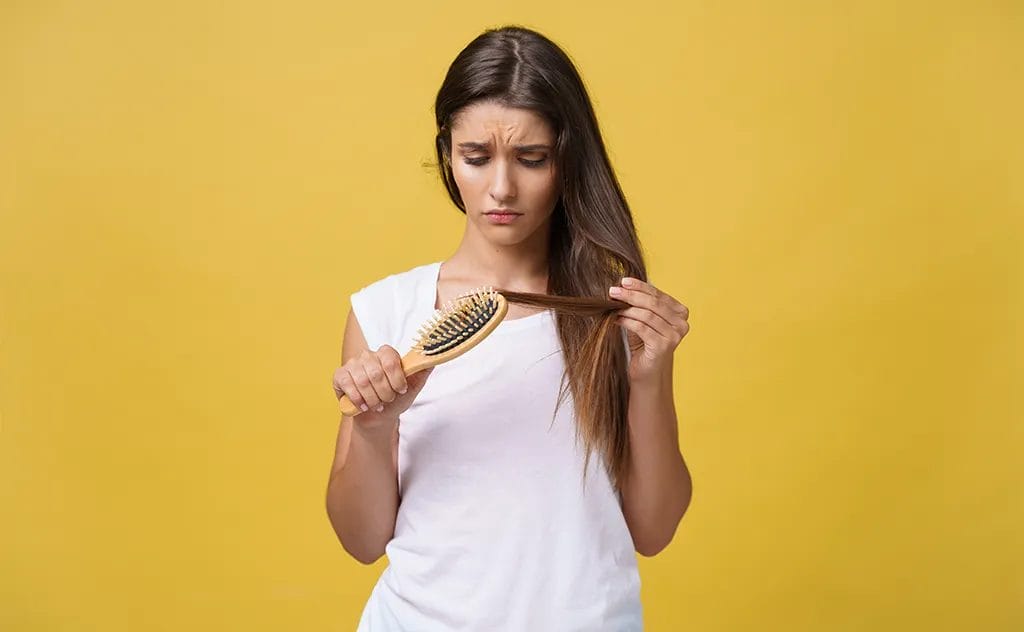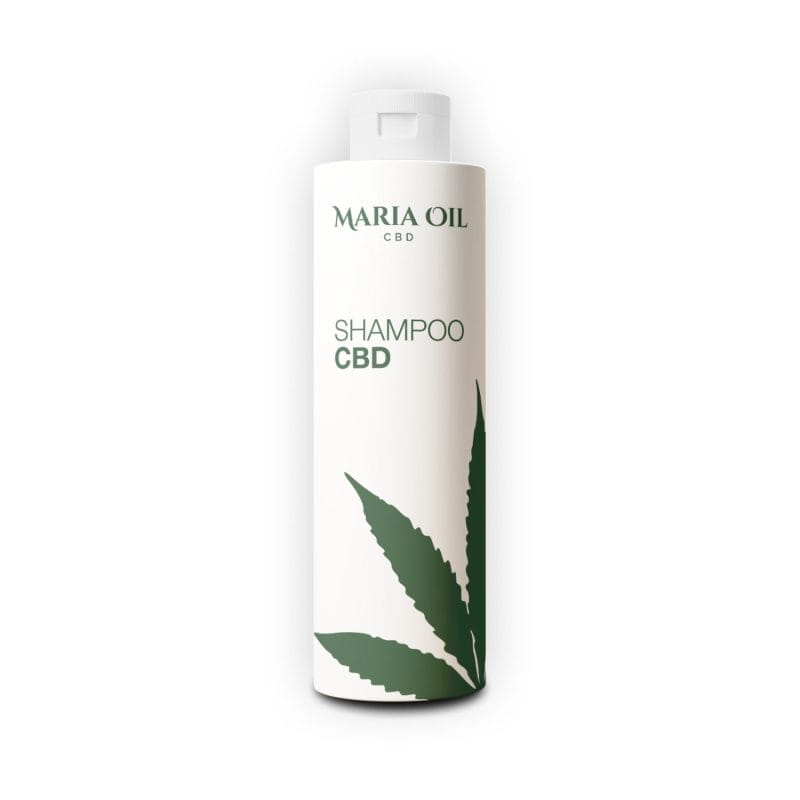Does your heart clench when you see your hair damaged and brittle? When it keeps falling out or you find it broken or with split ends? Would you like it to be thicker, shinier and, in short, healthier?
Despite being considered more of an aesthetic aspect than anything else, your hair is part of you and is a very powerful alarm bell telling you when something in your lifestyle is not working.
Precisely because of its importance, hair should not be stressed with chemicals, straighteners or extreme environmental conditions.
If you are suffering from damaged hair, maybe it is time for you to take care of it.
It is true that each one of us has different genetics and that hair can change a lot from person to person. Some have it thicker and some thinner, some are drier while others tend to be fuller. However, whatever type of hair you could possibly have, a proper beauty routine allows any hair to be at its full potential.
With practical advice and tips to minimise further damage, we have prepared a comprehensive guide for anyone wishing to renew the health of their damaged hair.
-
Product on sale
 CBD ShampooOriginal price was: £16.99.£13.59Current price is: £13.59.
CBD ShampooOriginal price was: £16.99.£13.59Current price is: £13.59.
How is damaged hair?
Damaged hair manifests itself with noticeable features that signal to you that it is time to take action.
How do you know if your hair is damaged? First of all, it is essential to carefully observe its condition. Split ends and the presence of knots are common signs of damage, indicating that the outer hair cuticle is compromised. Moreover, damaged hair tends to be dull and lacking in shine, because its internal structure is weakened.
A feeling of dryness and brittleness to the touch is another key indicator, suggesting the need for deeper hydration.
Often, breakage and excessive hair loss can be additional symptoms of structural damage. The presence of hair that breaks easily during combing is a clear sign.
Have you noticed one or more of these symptoms? Then your hair probably needs more or more targeted care. In order to find the right remedy, however, you must first understand what is causing this fragility so that you know where to intervene to get it back to health.
Causes of damaged hair
Why can hair become stubborn or brittle? Actually, damaged hair can result from a number of causes, often related to everyday actions or environmental exposures. Although many hair-related practices have become commonplace or ‘fashionable’, this does not detract from the fact that they can be damaging in some cases.
The excessive use of thermal tools such as hairdryers, straighteners and curling irons, especially at high temperatures, can strip hair of its natural moisture, making it dry and brittle.
Frequent chemical treatments, such as bleaching and perms, can weaken the hair structure, contributing to brittle spots and split ends. Especially if you do not use high quality or natural products. Using styling products containing aggressive ingredients may contribute to making your hair stubborn and hard to manage.
Prolonged exposure to sun, wind and weather can also damage the protective cuticle of the hair, making it dull and susceptible to breakage.
Lastly, the lack of proper hydration and nourishment is another determining factor. Hair needs to be properly hydrated to keep its elasticity and brightness.
When hair gets stubborn or weak, it is usually the result of an imbalance in daily care or prolonged exposure to damaging factors.

Remedies and treatments for damaged hair?
Do you understand why it is so important to know the underlying causes? Damaged hair in women, for example, can result from intensive use of straighteners. You may have noticed that your hair is drier when you curl or straighten it.
Instead, damaged hair in men may result from using an unsuitable or too aggressive shampoo.
To understand what the root cause is, you need to learn to observe your hair’s reaction to everything you do very well. For example, you might notice that your hair becomes more brittle when exposed to the sun, or that it dries out when washing, or that it breaks during a period when you are constantly dyeing your hair.
Having identified the cause, or causes, let’s find out together how to restore damaged hair.
-
Product on sale
 CBD ShampooOriginal price was: £16.99.£13.59Current price is: £13.59.
CBD ShampooOriginal price was: £16.99.£13.59Current price is: £13.59.
Repair damaged hair with a holistic approach
The approach to damaged hair must be targeted and use products specially formulated to regenerate the hair fibre.
Protein-based treatments are particularly effective in strengthening hair structure, contributing to reducing weakness. Products that contain amino acids, such as arginine, can help rebuild damaged cuticles, improving hair strength and elasticity.
Initially, it is crucial to minimise the use of heat tools and treatments, which can contribute to the deterioration of the hair structure. This time out can also help you understand what the main cause of brittle hair is.
Moreover, regular trimming of damaged ends is an essential preventive practice to avoid damage extending down the hair shaft.
Much underestimated is nutrition. A balanced diet, rich in nutrients such as vitamins and minerals, also contributes to healthy hair. Supplementing with omega-3 and biotin can promote hair growth and wellbeing from within.
Finally, another aspect that hardly anyone considers is that hair is a reflection of your lifestyle. If you feel stressed or under pressure, your hair will look like a mirror. This means that in addition to your beauty routine, you need to act on your habits so that you are more relaxed and serene.
Use masks and moisturising hair treatments
Does your hair feel like straw? Maybe you should moisturise it more.
Regenerating masks, enriched with moisturising ingredients such as keratin or natural oils, can penetrate deep into the hair fibre, repairing damaged cuticles and restoring vitality. Protein-based treatments for damaged hair, such as those containing silk or wheat proteins, help strengthen the hair structure, reducing brittleness.
Remember that masks should not be used too regularly. As little as one a month or every fortnight could make you notice the difference. In addition to masks, it is very important to use shampoos and conditioners specially designed to treat that particular hair problem.
In addition to this, adequate moisturising is crucial: using moisturising conditioners and conditioners helps maintain the moisture balance in the hair. The hair should indeed be moisturised from the inside by drinking plenty of water, but also from the outside with special products.
Reduce chemicals
To combat hair damage, you should limit the use of chemical products. Avoid aggressive treatments such as bleaching and perms to preserve the hair structure. If you just can’t do without them, you could turn to less invasive, ammonia-free dyes.
Opting for a shampoo and conditioner without sulphates and parabens reduces exposure to harmful chemicals. Overly aggressive cleansers can strip away natural oils, causing dryness and brittleness. In contrast, choosing products with natural and nourishing ingredients, such as essential oils, CBD or aloe vera, promotes healthy hair.
Herbal treatments can be effective natural remedies for damaged hair, but not only. In fact, Cannabidiol is now also used in facial and body products. Learn more about the benefits of CBD cosmetics to discover all the special features. Furthermore, masks with ingredients such as henna, amla or rosemary can help strengthen hair and restore its vitality. Consider that some populations, such as those in India, have been using these treatments for thousands of years and have long, strong hair.
It doesn’t matter whether your hair is brittle and thin or thick and oily, unfortunately chemicals are unforgiving and risk creating damage that is difficult to repair. As you can see, having beautiful hair is not just a matter of genetics, but rather of how we take care of it.
Be careful when using hair dryers and straighteners
The use of more or less high-tech straighteners to curl or straighten hair has been fashionable for centuries. However, the fact that this practice has become common does not mean that it is a good solution for your hair.
To counteract damage to your hair, you need to pay particular attention to the use of thermal tools such as hairdryers and straighteners. Keep the use of these appliances to a minimum, absolutely do not use them every day. When unavoidable, be sure to set the temperature to moderate levels to avoid excessive damage or choose less invasive technologies for your hair.
Use quality tools with ceramic or tourmaline coatings. These materials distribute heat evenly, reducing potential thermal stress on the hair.
Applying protective heat products before using hair dryers and straighteners can be an additional help. Heat serums or sprays can form a protective shield, reducing direct contact between heat and the hair structure. These products prevent moisture loss, thus reducing dryness and brittleness.
They also dry the hair naturally whenever possible, avoiding excessive use of a hair dryer. Free air drying allows hair to retain its natural moisture and structure. During winter, when you cannot do without a hair dryer, set a medium temperature.
How long does it take to strengthen hair?
It depends. The time needed to strengthen damaged hair can vary depending on the degree of damage and the treatments used. There is no universal answer, as many factors influence the hair regeneration process.
In general, hair grows at an average of about 1-1.5 centimetres per month. If the damage is limited to the ends and the rest of the hair is healthy, regularly trimming the damaged ends can promote stronger hair growth and reduce the risk of further damage.
As for targeted treatments, such as the use of masks, nourishing oils and specific products for repairing damaged hair, results may start to be visible after several weeks of regular application. However, it is important to be patient, as complete regeneration takes time.
In many cases, significant improvements in the appearance and health of hair are noticed after a few months of careful care and targeted treatments. This is why it is important to maintain a constant routine and to adopt conscious care practices that prevent further damage.
How to protect hair from damage
Let’s take a general overview of what a proper beauty routine for your hair consists of:
- Limit the use of thermal tools: minimise the use of hair dryers and straighteners and set moderate temperatures when using them and use protective heat products;
- Choose delicate products: choose products with natural ingredients that are nourishing and moisturising;
- Sun protection: cover your hair or use products with a UV filter when you are exposed to prolonged sunlight;
- Avoid excessive chemical treatments: limit the use of dyes, bleaching and perms or otherwise choose minimally invasive treatments;
- Cut the ends regularly: regular cutting helps eliminate damaged ends and prevent damage from spreading along the hair shaft;
- Gentle combing: avoid combs with too narrow teeth and comb gently to reduce hair breakage, start combing from the ends upwards to avoid knots;
- Natural drying: it is preferable to let the hair air dry;
- Balanced diet: eat a diet rich in nutrients, vitamins and protein;
- Avoid too tight hairstyles: ponytails or braids that are too tight can damage the hair and scalp;
- Cover your hair in aggressive environments: wear headgear such as hats or scarves in windy, cold or other adverse weather conditions.
By adopting these practices, you can be sure of protecting your hair from a good deal of damage to maintain or restore it to its former glory.
 Contact us
Contact us 


